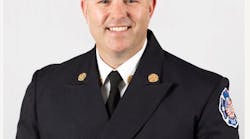Many of us remember the original promise of the FIRE Act: that we would be able to hire additional personnel and build new fire stations and training facilities. But reliance on grant money to fund firefighting positions became an obvious burden, as the Community Oriented Policing Services (COPS) program proved. Federal funding for new buildings and facilities is simply not possible with one-year grant programs. It takes that long just to complete the archeological and environmental impact studies. So the obvious needs, personnel and facilities, will remain unmet in the next round of federal grants. But by now most fire departments should have acquired the very basic equipment necessary to perform their jobs successfully and safely. New turnouts for your entire firefighting crew, new self-contained breathing apparatus (SCBA), air compressors, thermal imaging cameras, rescue tools and equipment, fire trucks and other apparatus, computers, printers, PC projectors, sprinkler trailers, public education robots, you name it, and suppliers and manufacturers have shipped over $2 billion worth of goods and services to the fire service community in the past four years.
The question, as the next round of funding becomes available in the 2005 federal budget year, is what needs have been left unfulfilled? Once the basics have been covered what should you ask for next? As many fire departments have discovered while they were assessing the run data to justify their grant applications, the number of fire responses has dropped. This means that basic firefighting training is essential to keep our skill levels up to par. There are many training service providers who can supply video and/or satellite programs that cover a wide range of operational possibilities like these as well as new challenges like weapons of mass destruction, hazardous materials and mass casualty classes. The thinking here, is now that you got what you need, how can you maximize its use. Training has always been an important but under funded area of the fire service. Grant funding for training would be a step up from the basic needs of many fire departments.
Many fire departments that now have the operational equipment that they need are taking a closer look at the fire prevention grants offered by the FIRE Act and Hazard Mitigation grant programs. There are a wide variety of fire prevention programs targeted to special need populations. Variations of any one fire prevention program exist all around the country. Here too there are a number of vendors that can help you reduce the number of fires and injuries with proven public educational materials and programs. The trick to the next level of funding is to identify what services your department is not involved in, and then target a grant opportunity to get the funding that goes beyond just the basics.
Rodney Slaughter is the president of Dragonfly Communications Network. He began his fire service career in 1974 as a military and civilian firefighter for the U.S. Air Force, with assignments in Florida, Hawaii and California. Since 1988, he has been employed as a deputy California state fire marshal working in code enforcement, training and grant coordination, and is currently assigned to Code Development and Analysis. He is a presenter and instructor for a variety of conferences, workshops and training programs. Slaughter studied fire science at Honolulu Community College and has a bachelor of arts degree in anthropology from California State University, Sacramento. Dragonfly Communications Network is an organization dedicated to training and development for the emergency response community. More information is available at www.dragonflynet.com.




